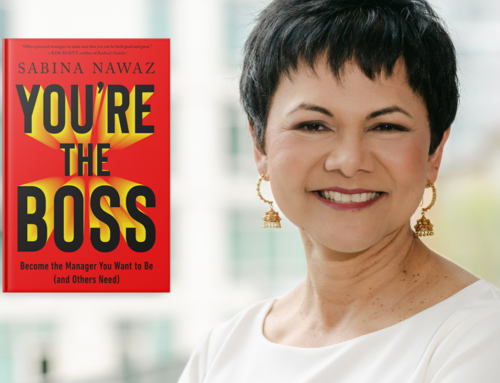A reader of this blog recently sent me Hooked: How to Build Habit-Forming Products, by Nir Eyal and Ryan Hoover (Portfolio/Penguin, 2014), saying that I needed to read it to understand the new world of online marketing and persuasion. The book presents a commendably simple and clear model for how to engage virtual and face-to-face customers and keep them coming back for more. Two things struck me right away about the book. First, the model does indeed focus on the online world, but the insights come from basic psychological theories about what makes people buy, decide, and connect that are decades old. And second, the model can be usefully applied to public speaking and audiences in order to create stronger talks.
Let’s understand the model first. Eyal’s concern is to help companies create products that customers turn into habits – products that you can’t escape because they become part of your daily life. Like Facebook or Instagram or watching YouTube cat videos.
The model has four simple parts. First, a trigger prompts you to do something. A trigger can be external – based on an idea sent to you in an email or a Facebook post – like a big green button on a website that says “click here.” Or, a trigger can be internal – something that causes you to respond emotionally in one of three ways: to seek pleasure and avoid pain, to seek hope and avoid fear, or to seek social acceptance and avoid rejection.
Once you’ve responded to the trigger, your next step is action. The trick here is to keep it simple and easy for the customer. How much time does it take? How much money? How much physical effort? How many brain cycles? How much social deviance? (How accepted by others.) And finally, how non-routine is the action? If you keep the action simple on all those levels, you’ll find it much easier to get the customer to do what you want.
The third step is variable reward. This concept is key to the whole model, because, as Eyal points out, if the reward is constant and not very intriguing, it quickly loses its punch for you as the customer. He uses the example of opening the fridge door – the light always comes on. You figure this out pretty quickly, so you’re not motivated to keep opening the door to see the light. You are motivated to watch Game of Thrones, on the other hand, because who knows who will die next?
So varying the reward a little keeps it intriguing. The concept is one that I first ran across in a college psych course many years ago; it’s not new. But Eyal’s application of it to the Internet world is instructive.
Finally, the fourth step in the model is the investment step. Here’s where you get hooked. You perform the activity over and over again until it’s a mostly unthinking part of your routine. You check Facebook many times per day. You obsessively monitor your Twitter feed for mentions. You see every email that pops into your inbox because you’ve got an alert on the lock screen on your phone.
Like shaving, or brushing your teeth, the action becomes habitual and voila! – you’re hooked.
So there it is; a simple model, but one that successfully explains a lot of (online) behavior. How can it apply to public speaking?
First, think of the opening of your speech as the trigger. How can you, the speaker, get your audience to hook into your presentation? What is the external trigger – the fact or question or story that grabs their attention and won’t let go? Or the internal trigger – what emotion can you provoke in the audience’s minds in order to get them paying attention?
Once you’ve got them invested, then get them doing a little mental work – the action. Get them thinking about the cost of not doing what you recommend, or the opportunity if they do take up your idea. Get their minds racing by pointing out the costs and then benefits of your point of view.
Third, give them that variable reward. What can they learn, or hear, that’s surprising, unexpected, and rewarding? What can you tell them that they didn’t know before? What news can you give them that they can use?
Finally, push them toward making your idea a new habit for them. Give them a road map for the future by laying out the way that their lives will change if they adopt your concept.
Use Eyal’s four steps as a simple model for creating an engaging presentation – and make adopting your point of view an easy habit for your audience to get hooked on, time after time.
Get hooked on our next one-day public speaking conference! Sign up here.









Very good article. Will make this actionable today.
Thanks and good luck.
A very inspirational write up. It will give the students of the Department of Psychology, University of Nigeria Nsukka with the http://socialscs.unn.edu.ng/psychology/ good tips on how to deal with talking to an audience